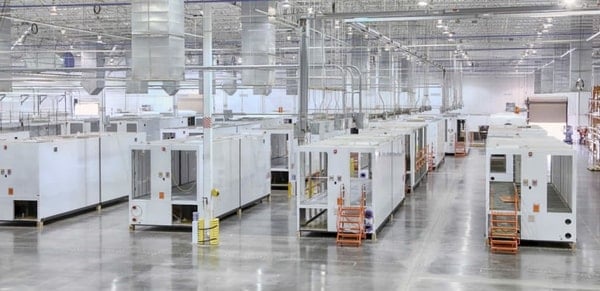Friday Fun Blog: Happy Birfday ‘Murica
July 3, 2015
Friday Fun Blog: ‘Murica’s Hangover Edition
July 10, 2015The need to build traditional data centers that are built in brick and mortar structures is quickly being overtaken by the emergence of modular data centers.
Modular data centers comprise of all the essential equipment that data centers have, such as network elements, server racks, power systems, fire suppression, cooling systems, uninterrupted power supply, monitoring and management tools as well as power distribution units. All these essential elements are built and packaged as a single unit that is often plug and play or very easy to install and setup.
The modular enclosures that the data centers come in are usually built with particular specifications in mind that have been standardized throughout the industry. The main standardized components of a modular data center include cooling systems, energy or generator module as well as the IT module. These components can be scaled in accordance with the needs of the user.

Businesses, both on the enterprise level and at the small business level, are opting for modular data systems mainly because of the changed economic climate that puts a higher emphasis on efficient utilization of meager resources, especially after the economic crisis of 2008 to present day.
Apart from economic reasons for deploying modular systems, the speed of deployment is another attraction that these modular data centers provide.
Below are the important considerations that you should have in mind when building a modular data center.
What Are the Operational Considerations of a Modular Data Center?
Standardization
Modular data centers are usually built off site from where they are installed and usually in an industrial setting, so that everything is made with exact specifications, using consistent materials and procedures. Since the modules are usually pre-fabricated, operational procedures can be standardized and documentation made consistent and uniform.
Data Management Software
Since the modules are standardized, the design and implementation of software to manage the data centers can be made in a very detailed way to monitor and manage different detailed aspects of the data center. This means that it is easy to manage several data center modules at once as well as utilize cloud computing technology.
What Are the Designs and Costs of the Modular Data Center?
Ownership Costs
The main cost considerations when it comes to modular data center include:
- Cost of acquisition: the cost of purchasing these data center modules is more manageable because you can purchase only what you need immediately, and therefore over-building for the sake of future-proofing is not very important.
- Cost of installation: This cost is highly reduced in terms of time taken to set it up as well as cash used, especially because a modular data system can be installed in days or weeks at most and not over the 12 months it takes for a traditional data system.
- Cost of operation: since components are standardized, efficiency of the modules can be optimized, further reducing cost and downtime.
- Cost of maintenance: Due to the standardization, replacement of parts and the expertise to maintain the data centers is not difficult to find at an affordable cost.
Promptness of Deployment
The turnaround between identifying the need for a data center to the actual installation of the data module has been greatly reduced because the modules are constructed offsite where all the tools, expertise and parts to build the system are already in place. This makes deployment a more prompt and seamless process as compared to installing or deploying a traditional data system.
Deploying a modular data system can take a few weeks or a few days, as opposed to over 12 months as is the case in ordinary data centers.
Scalable Modules
The beauty of modular data centers is that you can add more modules or distribute modules to different locations that need them more urgently, if need be. This means that businesses can quickly advance with data forecasts without affecting day to day operations.
Agility
In emergency cases, like in disaster management, where capacity planning is crucial, modular data centers are the most efficient way to get on the ground and make an immediate impact when lives are at stake.
Power Usage Effectiveness (PUE)
When it comes to power usage effectiveness, the modular data center is extremely energy efficient and is getting even more efficient over time.

The PUE is used to measure how energy efficient a data center module is. This is more important when it comes to green energy solutions.
Efficiency
Since modular data systems are manufactured as a single unit, it is much simpler to maintain systems as well as run them because procedures and components will be quite familiar to most experts and can be done with productivity in mind.
Disaster Recovery
Since the amount of data, and the sensitivity of data, is constantly increasing, it is important to have disaster protocols that will safeguard the data and equipment used as well as deploy as soon as increased capacity is required.
Disaster recovery and modular data are also crucial when you need to have access to data at all times with 100% uptime.
Real Estate
Since the nature of modular data systems is such that you can easily expand the capability of an organization based on how many data center units you require, this increased capacity can be in terms of new modular data centers stacked on top of each other in order to better utilize real estate space.
What Are Different Enterprises Where Modular Data Centers Are Applicable?
Data centers are useful and not limited to the following sectors:
Information technology and the telecom industry
- Banking, insurance, and finance services
- Government and public organizations
- Energy sector
- Defense and security
- Healthcare and education sectors
- Others
Modular data centers are also beginning to be widely used in web hosting organizations. They can be efficiently utilized because when additional capacity is required, it can be easily integrated without causing unnecessary downtime.

